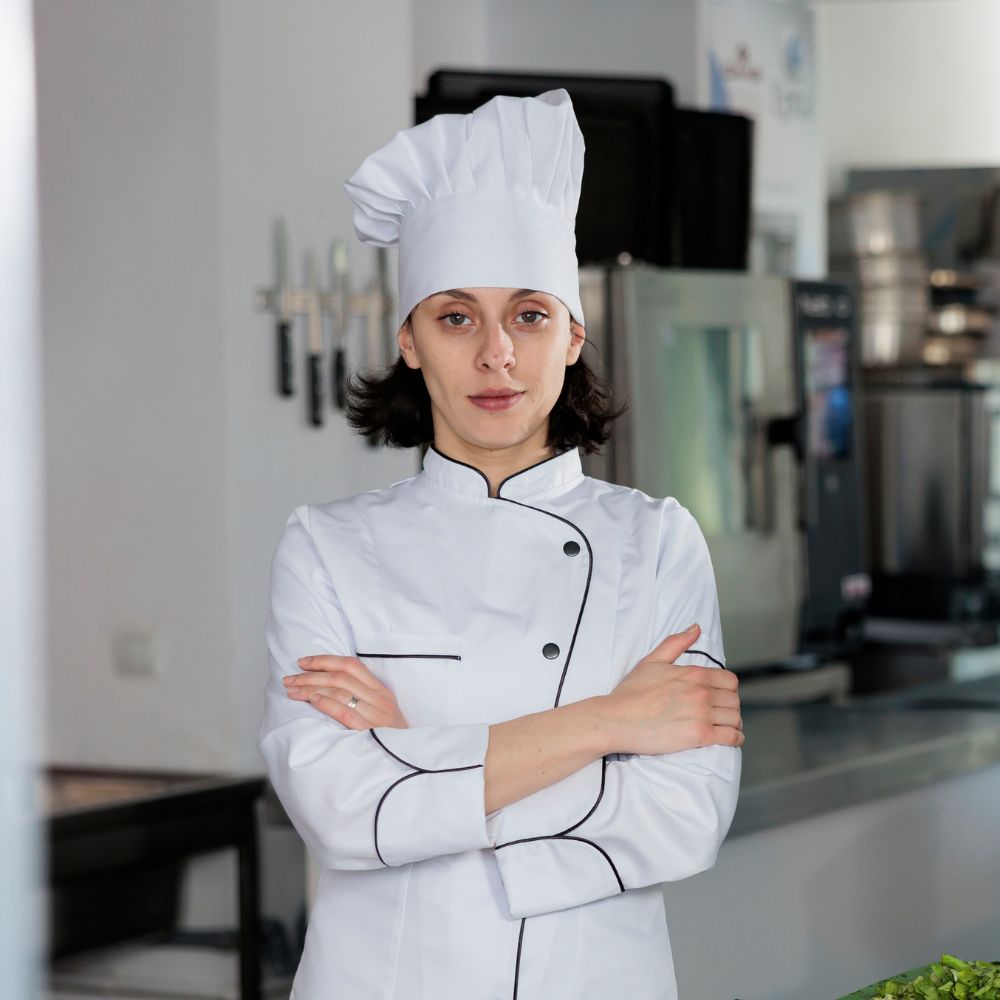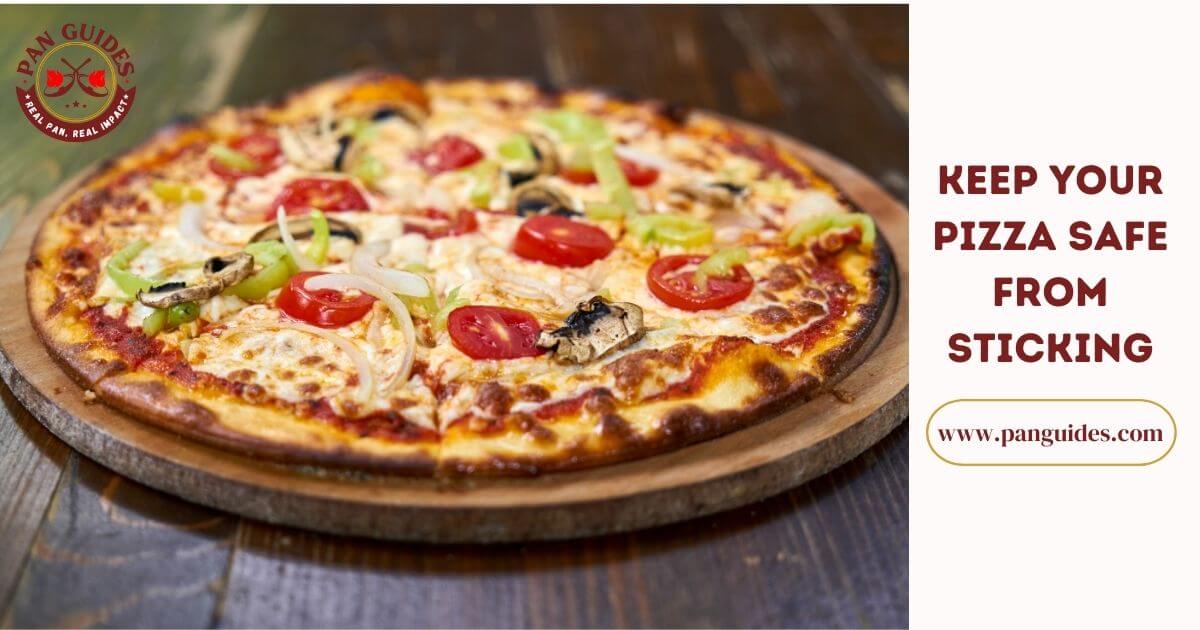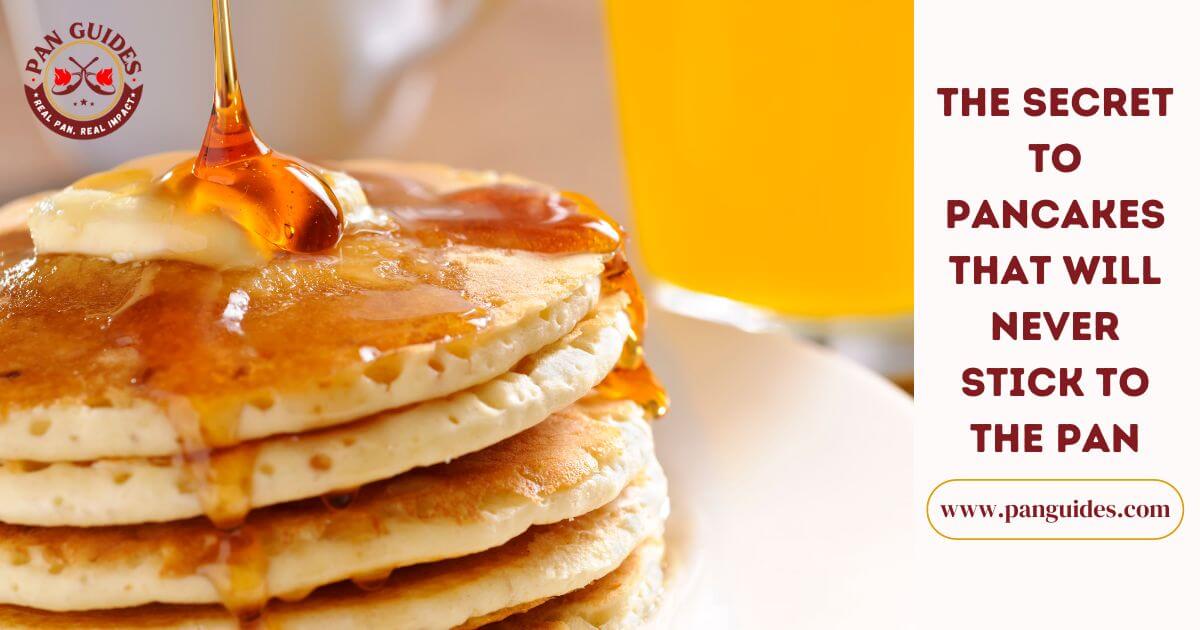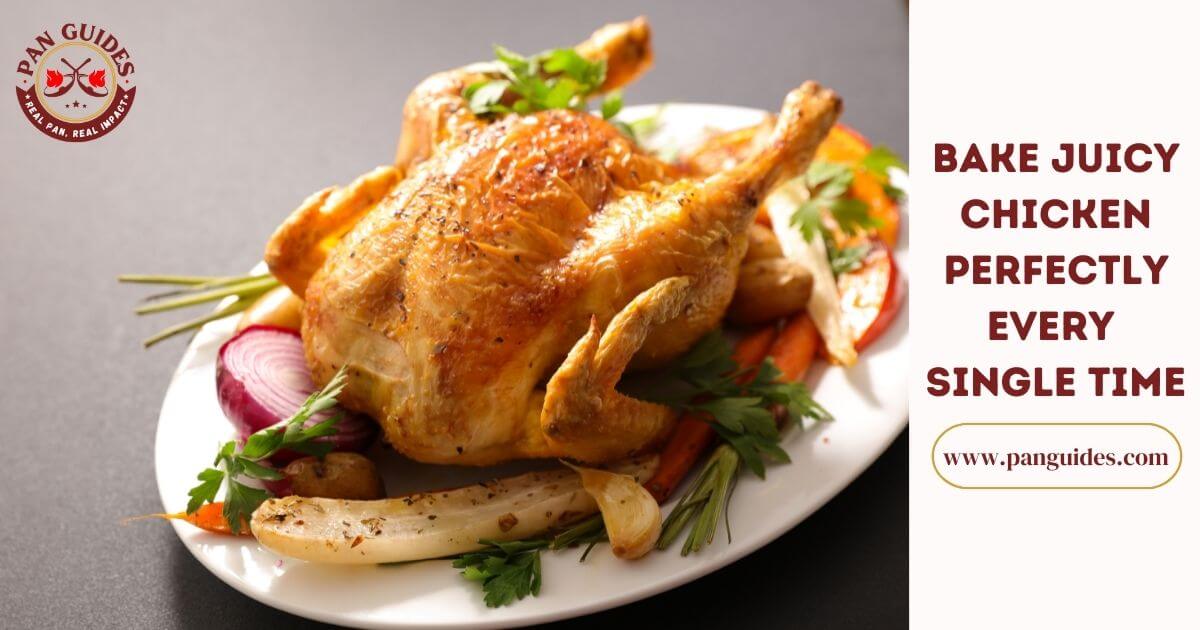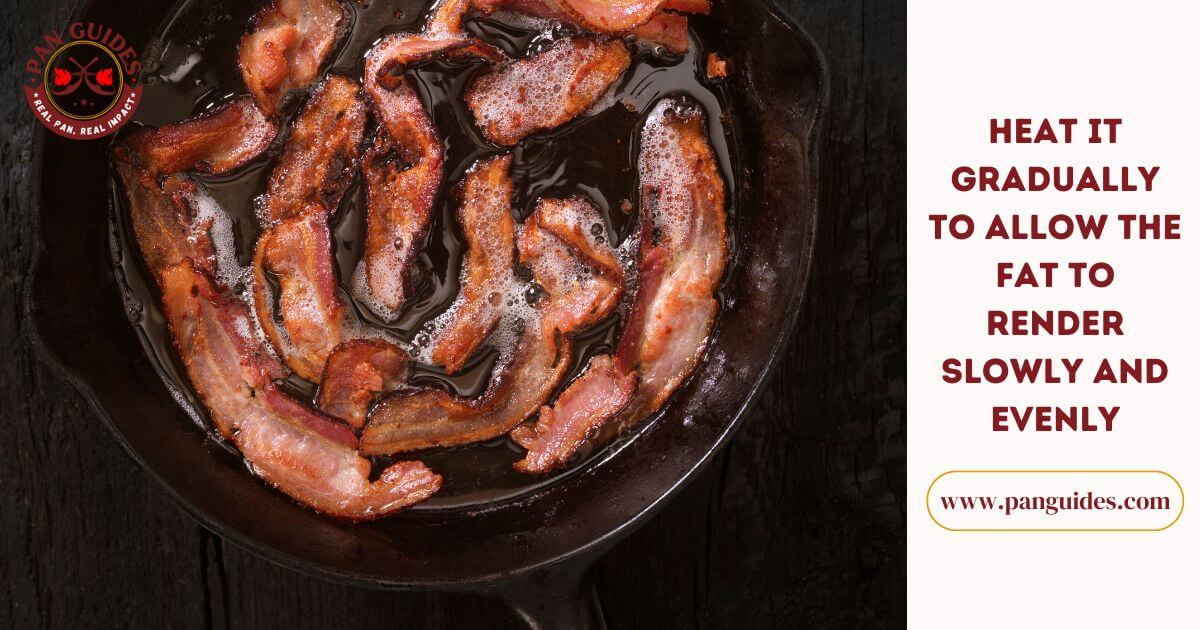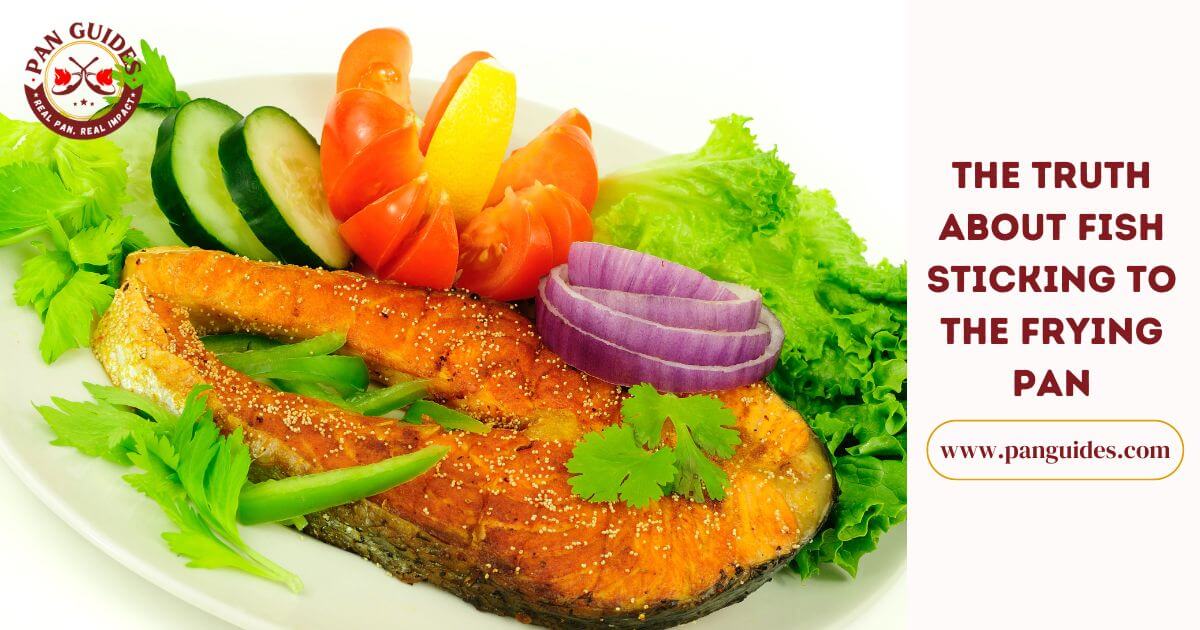When I was a little girl, my mom used to make the best omelettes. They were fluffy and golden brown and always slid right out of the pan. I always needed to understand this about others; why does omelette stick to the pan and tear apart when they try to flip them?
When I grew up and started making my own omelettes, I realized the secret to my mom’s success: a non-stick pan. Before that, I always wonder why do my eggs keep sticking to the pan.
When making a French omelette, there is always that pesky issue of the egg sticking to the pan. No matter how much pat of butter or oil you use, it seems like the egg wants to cling to the surface. But why does this happen?
Let’s take a closer look at the science behind this culinary conundrum.
Why Does Omelette Stick To The Pan? – 5 Reasons

There are a few reasons why this happens, but luckily, you can also do a few things to prevent it. Here are 5 reasons why your omelette might be sticking to the pan:
The Pan Is Too Hot
If the pan is too hot, the eggs will start to cook too quickly and stick to the bottom. This has been my experience in the kitchen, and I’m sure many other cooks have had the same issue.
Overheating the pan can quickly ruin an otherwise perfect batch of eggs.
Too Much Oil
I’ve been making French omelettes for years and learned that there’s a delicate balance between too much oil and too little oil. If you use too much oil, your omelette will stick to the pan. If you use too little oil, your omelette will be dry.
The key is to find the perfect balance so that your omelette comes out perfectly cooked every time.
Type Of Pan
The type of pan you’re using can also be a factor. If you find yourself with an omelette that just won’t come out of the pan, you can try a few things.
Nonstick pans are great for omelettes because they don’t stick. But if you don’t have a nonstick pan, that doesn’t mean you’re out of luck.
You can still make a delicious omelette in a regular pan; you might have to work harder at it.
Not Correctly Cleaning After Last Use
As a chef, I always clean my pan after every use. Properly not cleaning the pan after each use can result in an omelette sticking to the pan and ruining the meal. To avoid this, I make it a point to clean the pan immediately after cooking which also prevents residue on the pan. This way, I can be sure that my food will always turn out perfectly.
See More: Why does my cast iron pan have black residue and how to clean and prevent it
Not Enough Flipping
As a chef with many years of experience, I have seen firsthand that insufficient flipping can cause an omelette to stick to the pan.
If you don’t flip your omelette enough, the bottom yolk will become overcooked and brown while the top remains runny.
How To Prevent Omelettes From Sticking To The Pan? – 5 Tips
If you’re wondering how to keep an omelette from sticking to the pan, you are at the right place. With these five tips, you’ll know how to make an omelette perfect every time without sticking.
Use Nonstick Cookware
Sticking omelettes are a common breakfast frustration. But there is a fix! Using nonstick cookware can help to prevent omelette sticks to the pan. Nonstick cookware is made with a non-stick coating that helps prevent food from sticking to the pan.
This can be a lifesaver when you wonder why my eggs stick to the pan. The key is to ensure you use a nonstick pan in good condition.
Don’t Crowd The Pan
I was making my weekly omelette when I realized I needed to remember an important step: don’t crowd the pan. I had seen my mother make omelettes countless times, and she always made sure not to overcrowd the pan.
If there were too many eggs, she would make multiple omelettes instead. I remembered her telling me that if the pan were too crowded, the eggs would stick and be difficult to flip.
Moreover, if you wonder why does my omelette break, maybe you’ve crowd the pan already!
Use Butter or Oil
A good omelette is all about timing. Getting the perfect ratio of butter to oil in the pan is key to preventing your omelette from sticking and ruining its delicate texture.
Too much butter will make it greasy, while too little will dry it. Just the right amount, however, will result in a fluffy, flavorful omelette that will slide right out of the pan.
Use The Right Heat
As a professional chef, I always give my junior colleagues tips on improving their cooking.
One of the most important things to remember when making an omelette is to use the correct heat. If the pan is too hot, the omelette will stick and be difficult to flip.
If the pan is not hot enough, the omelette will be watery and won’t have that nice crispy texture.
Use A Rubber Spatula
I always remember my chef’s advice when I was a junior: use a rubber spatula to flip your omelettes, and they’ll never stick to the pan. It’s a simple trick, but it works like a charm.
Since then, I’ve always made sure to use a rubber spatula when making omelettes – and I always pass on that advice to any junior chefs under my wing.
What Is The Difference Between A Frying Pan And An Omelette Pan?

When it comes to kitchen cookware, there are so many different types and varieties to choose from. But when it comes down to it, what is the difference between a frying pan and a non-stick omelette pan?
For starters, a frying pan is typically used for frying. Whether cooking up some eggs or a nice piece of chicken, a frying pan is a versatile option.
Moreover, a frying pan, like an egg nonstick omelette pan, has a flat bottom and nonstick materials or nonstick coating; the omelette pan’s sides are gently sloped to make flipping eggs easier. In contrast, the frying pan’s straight sides keep food from spilling.
If you find yourself in a situation of eggs sticking to a nonstick pan, you can look at my other blog to get rid of the issue.
What Is The Best Pan To Cook An Omelette?

There are many different types of pans on the market, but not all are created equal when cooking an omelette. If you’re looking for the best pan to cook an omelette, you’ll want to consider a few factors before making your purchase.
- First, think about the size of the pan. An omelette should be cooked in a small or medium-sized pan so that it’s easy to flip.
- Plus, you need to use a non-stick, as these are the best pans to cook an omelette.
Yet, if you use stainless steel pans, you will always be left to wonder why does omelette stick to the pan!
How Do You Pick A Good Omelette Pan?
I hope you know how to use an omelette pan! Now it’s time to pick one. Once you have an idea of the kind of stovetop burner you have, your cooking abilities, and the kind of pans you like to use in general, here are a few other things to think about while shopping for an omelette pan.
- Determine what size pan you need depending on how often you make and consume eggs.
- Consider the number of eggs you’re trying to make into an excellent omelette: An 8-inch omelette pan will contain no more than three eggs, making it ideal for single chefs.
- While a pan of 10 inches or more will hold at least five or six eggs, making it suitable for preparing a brunch meal for a large group.
- If you have a tiny kitchen or want a more manoeuvrable pan, a saucepan may be a better option.
- You need a cool-to-the-touch handle and the ideal length and balance. If you’re looking for the most comfortable handles, remember that materials like silicone and stainless steel keep their temperatures down even after prolonged usage.
- Think about the pan’s slant and the height of its sides. To flip the perfect omelette, use a skillet with taller, slightly slanted edges.
Can You Make An Omelette In A Non-Stick Pan?
Yes, I always use a nonstick skillet; while I like my cast iron pans when it comes to cooking an omelette, I prefer a nonstick skillet.
This guarantees that your omelette will never cling to the pan and will always release quickly. Get those eggs well mixed: Eggs that have been well whisked to create a fluffy omelette. With a cast-iron skillet, it takes a lot of work to make a perfect omelette.
Are you an egg lover and love pancakes? Try this article to prevent pancakes from sticking to the pan, as it is one of the frustrations for pancake lovers.
Can You Use An Omelette Pan As A Frying Pan?
Yes, you can, but you should not. While a frying pan and an omelette pan both heat food, they serve distinct functions.
In contrast to a frying pan, an omelette pan features slanted edges that allow the cooked omelette to slip right out. An omelette pan’s surface is also more polished than a frying pan, making food less likely to cling.
Tossing, flipping, and plating an omelette should be a breeze using a pan that isn’t too heavy, especially when it comes to an asparagus omelette.
The optimal cooking temperature for an omelette is between low and medium heat. They shouldn’t be used for searing or frying at high temperatures since they will harm the non-stick coating and perhaps deform the bottom of the pan.
Moreover, egg lover also loves cornbread with bacon or spinach filling. When making it, if you face a problem when trying to prevent cornbread from sticking to the baking pan, my other article may help you out of the situation.
Conclusion
I never understood why does omelette stick to the pan. I always thought my mom made the best omelettes because they were fluffy and golden brown.
But I never knew the secret to her success. The secret is making the pan non-sticky. When you add proper oil to the pan, it creates a non-stick surface with sufficient heat.
So, if you’re wondering why do my eggs still stick to the pan, it’s probably because you didn’t add enough oil or your pan is not non-stick.
With the help of this article, you can make a perfect omelette without sticking it to the pan. Best of luck, and feel free to ask anything in the comment section.
Frequently Asked Questions
This FAQ section will help you make great omelettes without ruining them. With a bit of practice, you’ll be a pro in no time. So don’t be afraid to experiment and have fun with it.
How do you keep an omelette from sticking to the pan?
To keep an omelette from sticking to the pan, you need to use a non-stick pan and ensure the pan is hot before adding the eggs. You can also use oil or melted butter to help lubricate the pan.
Do you cook omelettes on high or low heat?
It would help if you cooked omelettes on low heat. They will be challenging and dry if you cook them on high heat.
How do you keep an omelette from sticking to a stainless steel pan?
To keep an omelette from sticking to a stainless steel pan, ensure the pan is heated before adding oil or melted butter. Then, add the eggs, cook over low heat, and flip with a plastic spatula.
Why do eggs stick to stainless steel pans?
Eggs stick to stainless steel pans because of the interaction between the egg whites in the egg and the pan’s surface. When eggs are cooked, the egg whites denature and stick to the pan. This is why it’s essential to use a non-stick pan when cooking eggs.
How long do you cook an omelette before flipping it?
There is no one-size-fits-all answer to this question, as the cooking time will vary depending on the size and thickness of your omelette. However, a good rule of thumb is to cook the omelette for 2-3 minutes before flipping. Eating an uncooked egg omelette is not a good idea.
How do you keep scrambled eggs from sticking to stainless steel pans?
If you ever wonder how to stop scrambled eggs from sticking to the pan, follow this instruction. To keep scrambled eggs from sticking to stainless steel pans, use a non-stick cooking spray or oil. Cook the eggs on medium-low heat, stirring often. Now enjoy scrambled eggs with avocado and chopsticks if you are familiar with them!

